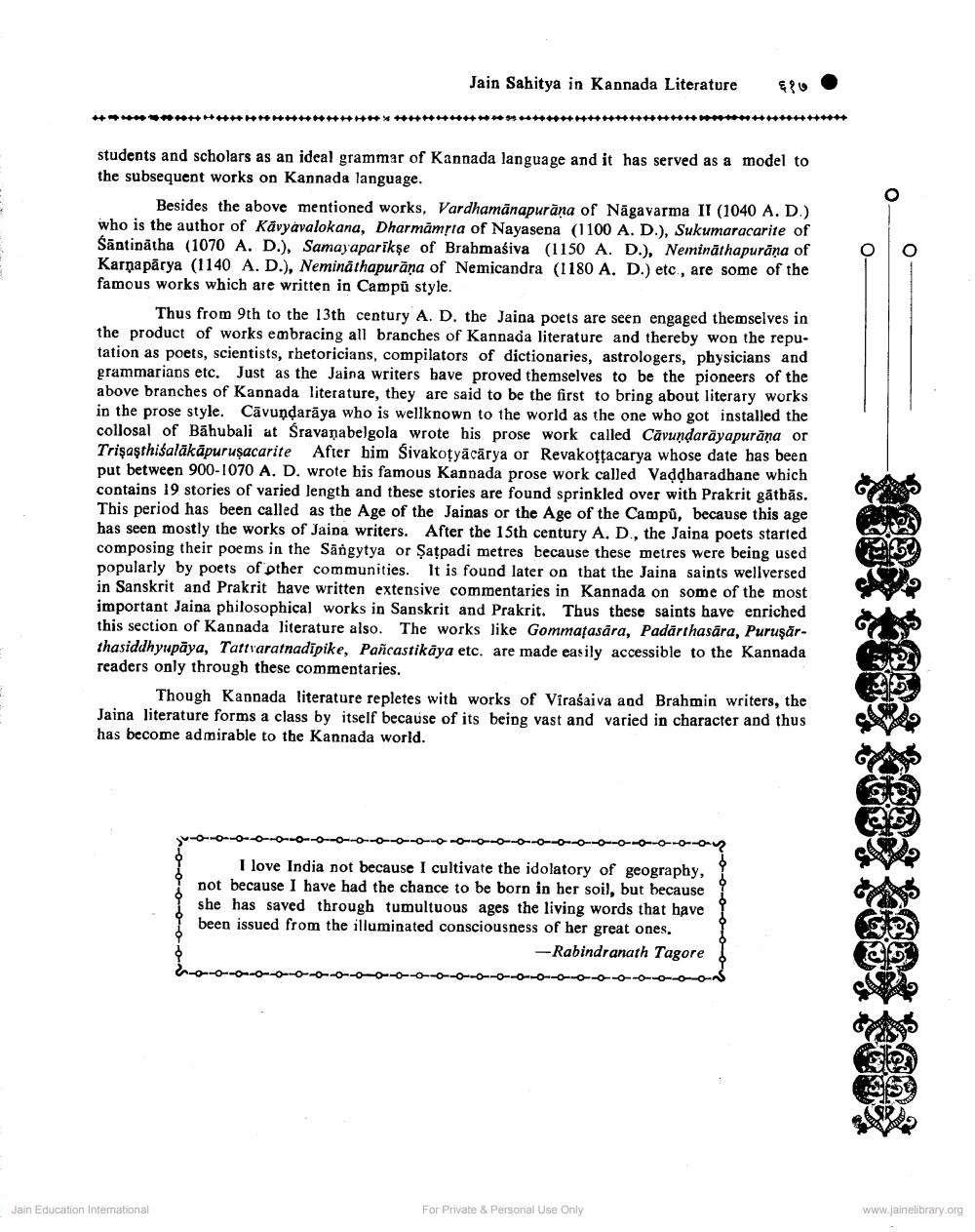________________
Jain Sahitya in Kannada Literature
?
0
0
students and scholars as an ideal grammar of Kannada language and it has served as a model to the subsequent works on Kannada language.
Besides the above mentioned works, Vardhamānapuräna of Nāgavarma II (1040 A. D.) who is the author of Kavyavalokana, Dharmāmsta of Nayasena (1100 A. D.), Sukumaracarite of Sāntinātha (1070 A. D.). Samay aparikşe of Brabmaśiva (1150 A. D.), Nemināthapuräna of Karņa pārya (1140 A. D.), Neminathapurāņa of Nemicandra (1180 A. D.) etc., are some of the famous works which are written in Campü style.
Thus from 9th to the 13th century A. D. the Jaina poets are seen engaged themselves in the product of works embracing all branches of Kannada literature and thereby won the reputation as poets, scientists, rhetoricians, compilators of dictionaries, astrologers, physicians and grammarians etc. Just as the Jaina writers have proved themselves to be the pioneers of the above branches of Kannada literature, they are said to be the first to bring about literary works in the prose style. Cāvu darāya who is wellknown to the world as the one who got installed the collosal of Bāhubali at Sravanabelgola wrote his prose work called Cāvundarāyapurāņa or Trişaşthisalākāpuruşacarite After him Sivakotyācārya or Revakottacarya whose date has been put between 900-1070 A. D. wrote his famous Kannada prose work called Vaddharadhane which contains 19 stories of varied length and these stories are found sprinkled over with Prakrit gātbās. This period has been called as the Age of the Jainas or the Age of the Campů, because this age has seen mostly the works of Jaina writers. After the 15th century A. D., the Jaina poets started composing their poems in the Sängytya or Satpadi metres because these metres were being used popularly by poets of other communities. It is found later on that the Jaina saints wellversed in Sanskrit and Prakrit have written extensive commentaries in Kannada on some of the most important Jaina philosophical works in Sanskrit and Prakrit. Thus these saints have enriched this section of Kannada literature also. The works like Gommatasara, Padärthasāra, Puruşārthasiddhyupāya, Tattvaratnadipike, Pañcastikaya etc. are made easily accessible to the Kannada readers only through these commentaries.
Though Kannada literature repletes with works of Virašaiva and Brahmin writers, the Jaina literature forms a class by itself because of its being vast and varied in character and thus has become admirable to the Kannada world.
-OD-OV
---------------------------------------------------
I love India not because I cultivate the idolatory of geography, not because I have had the chance to be born in her soil, but because she has saved through tumultuous ages the living words that have been issued from the illuminated consciousness of her great ones.
--Rabindranath Tagore ------ ---------------0----------- - -----------
Jain Education International
For Private & Personal Use Only
www.jainelibrary.org




